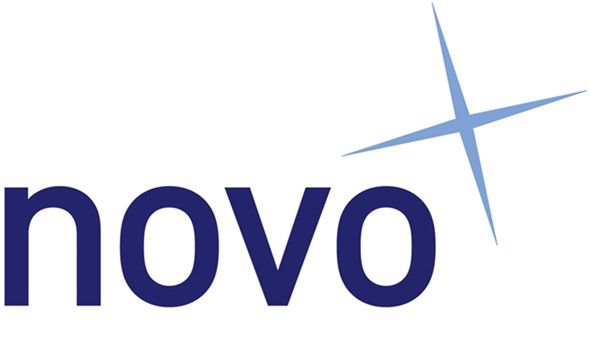The Employer’s Guide to Executive Retention Agreements

If you’ve been struggling with the departure of your leadership, you may have been tempted to offer retention agreements as a financial incentive to persuade them to stay. This makes sense considering compensation is still one the biggest reasons for turnover, given evidence from 2023 reports from Payscale and Glassdoor. Thus lucrative retention agreements can be vital to preserving high-performing executives’ invaluable expertise and leadership if strategically used.
In this guide, we will take a deep dive into the nuances of executive retention agreements, their significance, occasions where they prove crucial, potential pitfalls, and how you, as an employer, can effectively employ them. The insights are drawn from NovoExec’s 20 years of experience collaborating closely with global leadership, offering a blend of practical wisdom and industry expertise.
Understanding Executive Retention Agreements?
Executive retention agreements are contractual arrangements designed to incentivise top-tier executives to remain with a company during critical periods, such as mergers, acquisitions, or closures. These agreements typically include financial incentives as powerful motivators for executives to maintain their commitment to the organisation. However, incentives go beyond monetary rewards and may encompass:
- Retention signing bonuses
- Salary raises
- Promotions or title changes
- Adjustments to the executive’s bonus structure
- Equity grants, including RSUs, restricted stock, ISOs, and non-qualified stock options
- Measures to minimise tax exposure
- Severance terms, allowing a single trigger if conditions are not met.
- Comprehensive severance terms covering base pay, bonuses, benefits, and equity
- Revisions to terms related to outside boards, consulting, non-competes, and other restrictions to facilitate opportunities after the retention period ends.
Are executive retention agreements legally enforceable?
In most jurisdictions, employment is considered ‘at-will,’ allowing either the employer or employee to terminate it at any time and for any reason unless a contract is in place. Executive retention agreements serve as such contracts, outlining the consequences of early termination by the employee. If violated, the employee may have to pay a penalty, return any benefits received, or forfeit promised benefits. The enforceability of the contract depends on factors such as compliance with local laws and legal formalities. Remember that employees can also pursue legal action against the employer for breaching the agreement, in which case the employer will have to pay compensatory damages.
The Importance of Executive Retention Agreements
There are various situations in which a company would want to retain executive talent, such as during upcoming milestones or a competitive job market. Here are the situations in which you may consider offering a retention agreement:
a. During Mergers and Acquisitions
When a company’s leadership is a key factor in attracting buyers, preserving this leadership during a merger or acquisition becomes crucial. Retaining executives ensures a smooth transition and contributes to the overall success of the merger or acquisition.
b. Business Closures
In the face of impending business closures, employees may try to leave due to the diminished job security. Executive retention agreements can help retain talent to effectively and efficiently wind down business activities.
C. Upcoming Milestones
If the company is gearing up for a critical milestone such as seeking funding, going public or a liquidity event, a retention agreement would be justified to keep executives in place.
D. Business Dependence
Sometimes companies become reliant on the expertise of a C-suite member for core business functions. For instance;
- The executive may manage key accounts whose loss could harm the company’s sales.
- Strong connections with other managers and high-performing individuals may be jeopardised if the executive departs.
- In technology companies, the executive may play a pivotal role as an inventor, innovator, or technologist, essential to product creation, maintenance, or development.
- The executive’s positive reputation may create a goodwill dependency, and their departure could negatively impact the company’s perception.
When Executive Retention Agreements May Not be Beneficial
While retention agreements hold immense value, there are cases where they won’t be optimal. Exercise caution during the following situations:
a. In Response to High Turnover Rates
If you’re dealing with an organisation-wide retention crisis, retention agreements may exacerbate the issue. Employees may take it as a sign that the organisation is desperate to retain talent, thus fueling their desire to leave. Address underlying issues using holistic retention strategies before resorting to retention agreements.
b. Offering Uncompetitive Salaries
Retention agreements are not a panacea for inadequate compensation structures. Ensure base salaries are competitive within the industry before introducing retention incentives.
c. As Your Only Retention Strategy
As mentioned above, effectively retaining employees involves considering employee development, well-being, goals, and financial incentives. A narrow focus on retention bonuses might convey desperation or a lack of concern for employees.
Key Considerations for Crafting Executive Retention Agreements
a. From the Company’s Perspective
You can’t pay to keep everyone so prioritise high-impact executives whose loss would be most significant.
Initiate transparent communication with them to identify factors that may prompt them to consider leaving. Tailor the retention agreement to directly address these concerns and make it sufficiently attractive to outshine any competing offers they may receive.
When drafting the agreement, precision is paramount; ambiguity can expose your organisation to legal and financial repercussions. It’s crucial to close any potential loopholes that could be exploited by the executive, leading to an untimely exit before the retention period ends. Lastly, conduct a thorough cost-benefit analysis to determine the value of the talent to your company.
b. From the Employee’s Perspective
Understand the individual motivations of the executive and frame the benefits to their specific needs. Do they want a new job title? Increased responsibilities? Or more flexible pay? Would they prefer a salary raise over a time-based contract?
Maintain transparency about the rationale behind offering the incentive. Executives will naturally be curious about why they are being approached, and fostering open communication can address any concerns they may have about the company. Provide room for negotiation in the agreement, allowing executives to propose modifications that better align with their expectations and needs.
In some instances, your executive may approach you with a retention agreement first. In such a case, reciprocate with the same transparency and communication about the organisation’s perspective. Lastly, allow a provision in the agreement for exceptional circumstances such as sickness, injury, or the death of a close one, recognising these events as beyond their control. Outline the steps to be taken if the agreement is terminated due to such circumstances.
Summing It Up: A Collaborative Approach for Mutual Benefit
A well-structured and mutually beneficial retention agreement serves as a strategic tool for ensuring organisational stability and success, facilitating the retention of high-level talent. Organisations can navigate transitions confidently by understanding the unique needs of both companies and executives, crafting transparent and flexible agreements, and fostering open communication.
References:
https://www.payscale.com/research-and-insights/cbpr/
https://research.glassdoor.com/site-us/wp-content/uploads/sites/2/2022/11/Indeed-Glassdoors-2023-Hiring-Workplace-Trends-Report-Glassdoor-Blog.pdf












